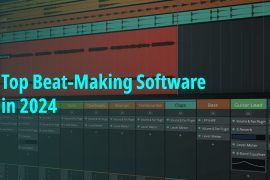Suppose companies seek the most effective intranet software. In that case, they’re typically seeking a solution to assist employees in connecting to the company’s values and culture to get work completed and recognize their achievements. In their most effective form, intranets promise to do precisely what they claim to do.
They function as an internal communication hub, allowing people to keep in touch with each other and locate necessary resources. They’re meant to help be a way to connect employees and keep them engaged; therefore, it’s not surprising that businesses want to incorporate an intranet into their arsenal. In this post, we’ll look at the top intranets available, the factors that make them different from their competitors, and their benefits and cons.
While we’re biased toward our system, we’ve got an understanding of the subject we believe should be available. There is no perfect software; Certain software may better suit specific scenarios than others. We’ll include critical differences in the different software so that you can decide the one that best suits your company’s needs. Let’s get started.
Table of Contents
What is Intranet Software?
An intranet is a secure intranet within an organization that encrypts company data and computer resources sharing among employees. It can also be utilized to work in groups or conferences via teleconferences. Intranets promote interaction within the organization.
They allow employees access to essential information, hyperlinks, applications, forms, and a database of corporate records. The database contains the usernames of employees with access permissions to network resources and is frequently used to ensure the security of intranets.
How do Intranets work?
A secure and reliable intranet relies on a web server, which handles the requests to access data stored within the servers. Web servers search for required files and provide them to the user who needs them. The content management system must be in place to control intranet-wide publishing, content creation, and control. Intranets can also comprise multiple interconnected local area networks (LANs) and lease lines that connect to wide networks in the area. The intranet’s web server utilizes the TCP/IP protocol, HTTP, and other protocols for internet access. In general, intranets have connectivity to some or all gateway computers to access external internet resources and sources. To access their intranet at work, users must have unique passwords for their network and connect to the company’s local area network. Remote employees can access the intranet using a VPN (VPN) or a secure connection. VPNs allow users who are not connected to the LAN to VPN allows users who are not connected to the LAN required to connect to the intranet and have access to all features and information that they would get if they connected to the local area network.
A firewall is vital for the safety of the company’s intranet. It acts as a barrier between the public web and the private intranet. It monitors all data transmissions, both outgoing and inbound, to ensure they don’t contain suspicious or unauthorized requests. They also guarantee that the malware, as well as other attacks, cannot penetrate the intranet. When an intranet area is accessible to partners, customers, suppliers, customers, or anyone else not part of the organization, this segment will become an extension of the extranet. The firewall is crucial for securing intranet networks, which include extensions to extranets.
The intranet is typically its version of the internet. Through tunneling, businesses can send private messages through a public network. The tunneling system uses special encryption, decryption, and other security features to join their intranet in one location. Hosted software also provides intranets. Instead of having a business have its server, they purchase intranet software, which performs functions similar to traditional intranets. Many modern intranets work similarly to social media apps that connect to enterprise applications. These are often referred to as Employee Experience Platforms.
Top 5 Intranet Software for Business in 2023

Creative Social Intranet
Our list starts with the Creative Social Intranet. Creative Social Intranet is a solution for businesses to manage employee, reward and recognition programs, onboarding programs, ticketing, social gamification, and more. It lets users manage plans, documents, ideas, and media, sharing the same information with team members via a unified intranet.
The dashboard lets enterprises look up short links, announcements, an employer directory, blog posts, and work-related reports while ensuring transparency throughout the company. Essential aspects of Creative Social Intranet include knowledge assessments, notification and social media integration news feeds, asset booking, and vendor management. The system has various applications for weather forecasts, marketplaces and calendars, case studies, new releases, and more.
It allows users to improve communications across their company. Employee profiles let users organize designations, photos, places, addresses, activity records, and shared documents to ensure that employees are accountable. It streamlines employee engagement with various tools like birthdays, anniversaries, forum groups, Bookmarks, bookmarks and RSS reading, meeting rooms, prizes and live chats, suggestions, quizzes, and others.
- Deployment – Cloud, SaaS, Web-Based.
- Platform – Mac, Windows, Linux, Android, iPhone, iPad.
- Top Features – Activity/News Feed, Alerts/Notifications, Blogs, Calendar Management, Chat/Messaging, Collaboration Tools, Communication Management, Content Management, Customizable Branding, Customizable Fields, Customizable Forms, Customizable Reports, Discussions/Forums, Document Management, Document Storage, Employee Communities, Employee Database, Employee Management, Employee Onboarding, Employee Portal, Employee Profiles, Employee Recognition, Employee Reward Programs, Event Calendar, Feedback Management.
- Free Trial & Version Available
- Prize – Price not provided by the vendor.
- Best for – File Management, Gamification, Knowledge Base Management, Learning Management, Mobile Access, Negative Feedback Management, Policy Management, Private Network, Pulse Surveys, Question Library, Real-Time Notifications.
- Support – Phone Support, Email/Help Desk, Chat, Knowledge Base.
- Overall Rating – 5/5 Stars
Connecteam
The second that comes on the list is Connecteam. Connecteam is a workplace management software that allows managers to set their company processes on autopilot, allowing them to concentrate on growth for their business as employees are more flexible, productive, and content. Increase productivity and save time through mobile-friendly custom checklists, forms, and reports. Schedule shifts and monitor working hours using GPS time clocks; simplify employees’ communication, improve professionalism, organize everyday tasks, and many more things, all within one application. Ensure system admins can access a safe and straightforward login using Active Directory Single Sign-On (SSO ).
- Deployment – Cloud, SaaS, Web-Based.
- Platform – Windows, Linux, iPhone, iPad.
- Top Features – 360 Degree Feedback, @mentions, API, Access Controls/Permissions, Accounting Integration, Action Management, Activity Dashboard, Activity Management, Activity Tracking, Activity/News Feed, Add & Edit Photos, Alerts/Escalation, Alerts/Notifications, Appointment Management, Appointment Scheduling, Approval Process Control, Approval Workflow, Archiving & Retention, Assignment Management, Attendance Management, Attendance Tracking, Audit Management, Audit Trail, Automated Scheduling, Automatic Backup, Automatic Time Capture, Availability Management, Benchmarking, Benefits Management, Billable & Non-Billable Hours, Billable Items Tracking, Biometric Recognition, Biometrics, Bite-Sized Learning.
- Free Trial & Version Available
- Prize – Price not provided by the vendor.
- Best for – Brainstorming, Business Process Automation, Calendar Management, Calendar Sync, Candidate Management, Capacity Planning, Cataloging/Categorization, Categorization/Grouping, Chat/Messaging, Class Scheduling, Clock In/Out, Collaboration Tools, Comment Library, Commenting/Notes.
- Support – Email/Help Desk, FAQs/Forum, Knowledge Base, Phone Support, 24/7 (Live Rep), Chat.
- Overall Rating – 4.8/5 Stars
Glasscubes
Avanan is third on the list. Glasscubes can be described as a cloud-based collaborative platform that both enterprises and government departments use. It offers a cost-effective means of working together by storing and sharing data beyond an organization’s firewall. It’s safe, reliable, up-to-date, and accessible to anyone.
Glasscubes is designed to give users the most efficient method to share files, work on projects, and share information, all through an online, safe workspace. When users must interact with clients, coworkers, or colleagues, Glasscubes ensures that users can work productively. Glasscubes allows safe file sharing, task management, remote teamwork, group intranet portals for clients and partners, Knowledge management, communications, and broadcasting.
- Deployment – Cloud, SaaS, Web-Based.
- Top Features – @mentions, API, Access Controls/Permissions, Active Directory Integration, Activity Dashboard, Activity Tracking, Activity/News Feed, Alerts/Notifications, Approval Process Control, Archiving & Retention, Assignment Management, Audit Trail, Bar Chart, Blogs, Brainstorming, Calendar Management, Charting, Chat/Messaging, Client Portal.
- Free Trial Available
- Prize – $35/ Per month.
- Best for – Collaboration Tools, Color Codes/Icons, Commenting/Notes, Communication Management, Compliance Tracking, Contact Management, Content Library, Content Management, Create Subtasks.
- Support – Email/Help Desk, FAQs/Forum, Phone Support, Chat.
- Overall Rating – 4.7/5 Stars
Blink
Blink is an employee app and a portal designed for mobile teams that encourages collaboration, increases productivity, and ensures everyone is informed. It is designed to improve the user experience through the mobile-first experience and an integrated communications platform. Blink includes features like a custom activity feed team calendars, team calendars and third-party integrations, messaging capabilities, a unified search feature, and many more.
- Deployment – Cloud, SaaS, Web-Based.
- Top Features – @mentions, API, Access Controls/Permissions, Active Directory Integration, Activity Dashboard, Activity Tracking, Activity/News Feed, Alerts/Notifications, Archiving & Retention, Audience Targeting, Audio/Video Messaging, Benchmarking, Blogs, Brainstorming, Calendar Management, Calendar Sync, Chat/Messaging, Collaboration Tools, Commenting/Notes, Communication Management, Compliance Tracking, Contact Database, Contact Management, Content Library, Content Management, Customizable Branding, Customizable Fields.
- Free Trial & Version Available
- Prize – $50 / Per month.
- Best for – Customizable Forms, Customizable Questions, Customizable Reports, Customizable Templates, Data Import/Export, Data Security, Discussions/Forums, Document Management, Document Storage, Drag & Drop, Email Reminders, Employee Communities, Employee Database.
- Support – Email/Help Desk FAQs/Forum Knowledge Base Phone Support, Chat.
- Overall Rating – 4.7/5 Stars
Bloomfire
Bloomfire is a knowledge-sharing and insight platform that assists top companies in centralizing and sharing the information they share across their organizations. Bloomfire can help break down barriers that arise when information can be dispersed across multiple platforms restricted to the heads of a handful of subject matter experts.
Bloomfire’s editor makes it easy for staff members to make content with rich media directly on the platform or to post them from a computer or shared drive easily. Bloomfire can support more than 50 formats of files to help share information regardless of format. Users can also post questions to the platform to let everyone check out what’s been posted and the answers.
- Deployment – Cloud, SaaS, Web-Based.
- Platform – Windows, Mac, Linux, Android, iPhone, iPad.
- Top Features – @mentions, API, Access Controls/Permissions, Active Directory Integration, Activity Dashboard, Activity Tracking, Activity/News Feed, Alerts/Notifications, Asset Categorization, Asset Library, Asset Sharing, Audio File Management, Brainstorming, CRM, Cataloging/Categorization, Collaboration Tools, Commenting/Notes, Communication Management, Configurable Workflow, Content Creation, Content Library, Content Management.
- Prize – $25/ Per month.
- Best for – Content Publishing Options, Customizable Branding, Customizable Fields, Customizable Reports, Data Import/Export, Data Security, Data Visualization, Discussions/Forums, Document Capture, Document Classification.
- Support – Email/Help Desk FAQs/Forum Knowledge Base Phone Support, Chat.
- Overall Rating – 4.4/5 Stars
Conclusion
There could be a variety of reasons why an organization utilizes an intranet. The basic idea is that an intranet helps to increase efficiency. Its goal is to link employees, facilitate collaboration, and improve company communication. Based on the structure of an organization, the intranet could tackle more issues, such as breaking down social barriers. It is your responsibility to decide which one you like.
Also Read
Diving Deeper: Exploring the Various Types of AI
Navigating the Cloud: The Ultimate Guide to File Sharing Services






